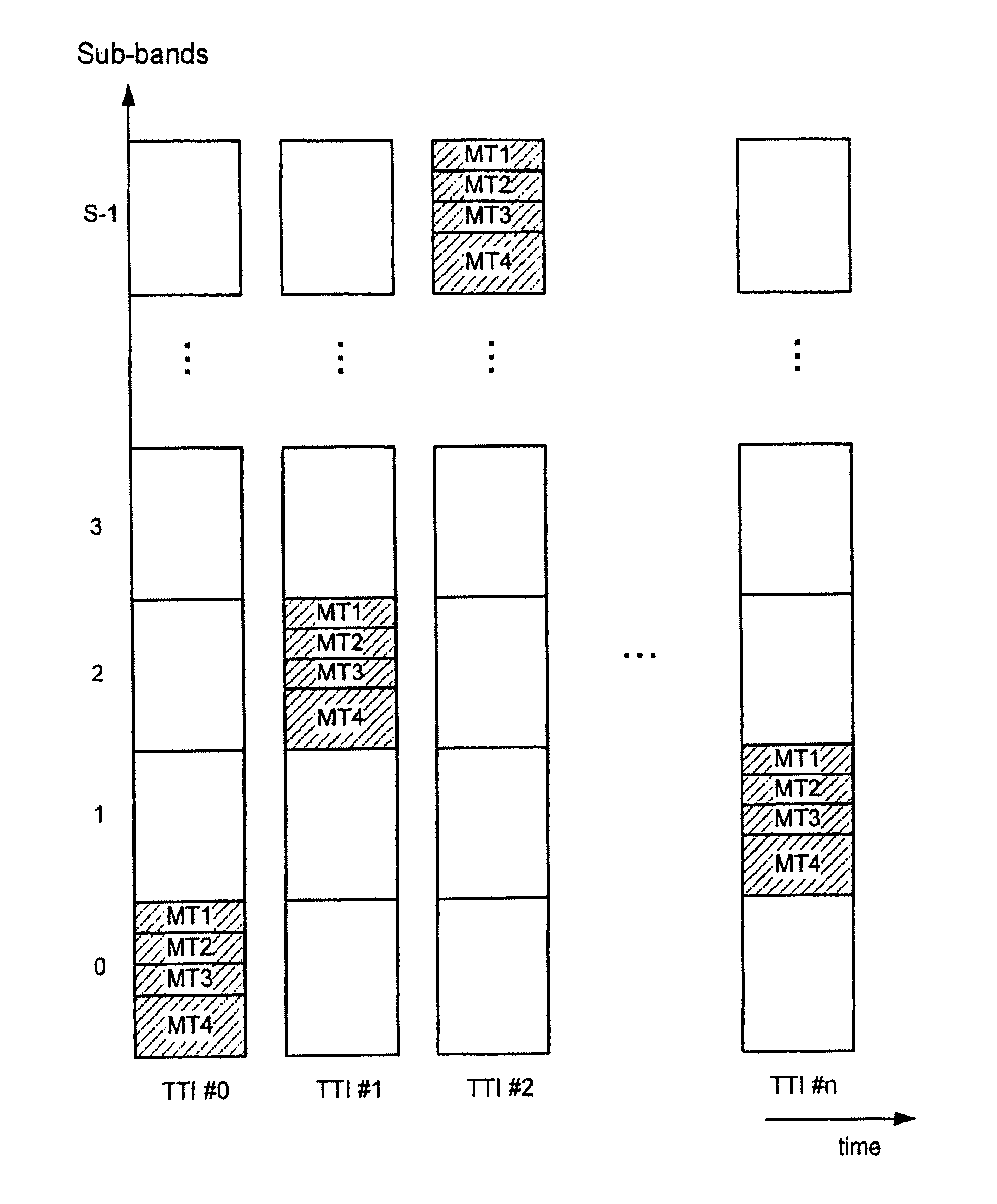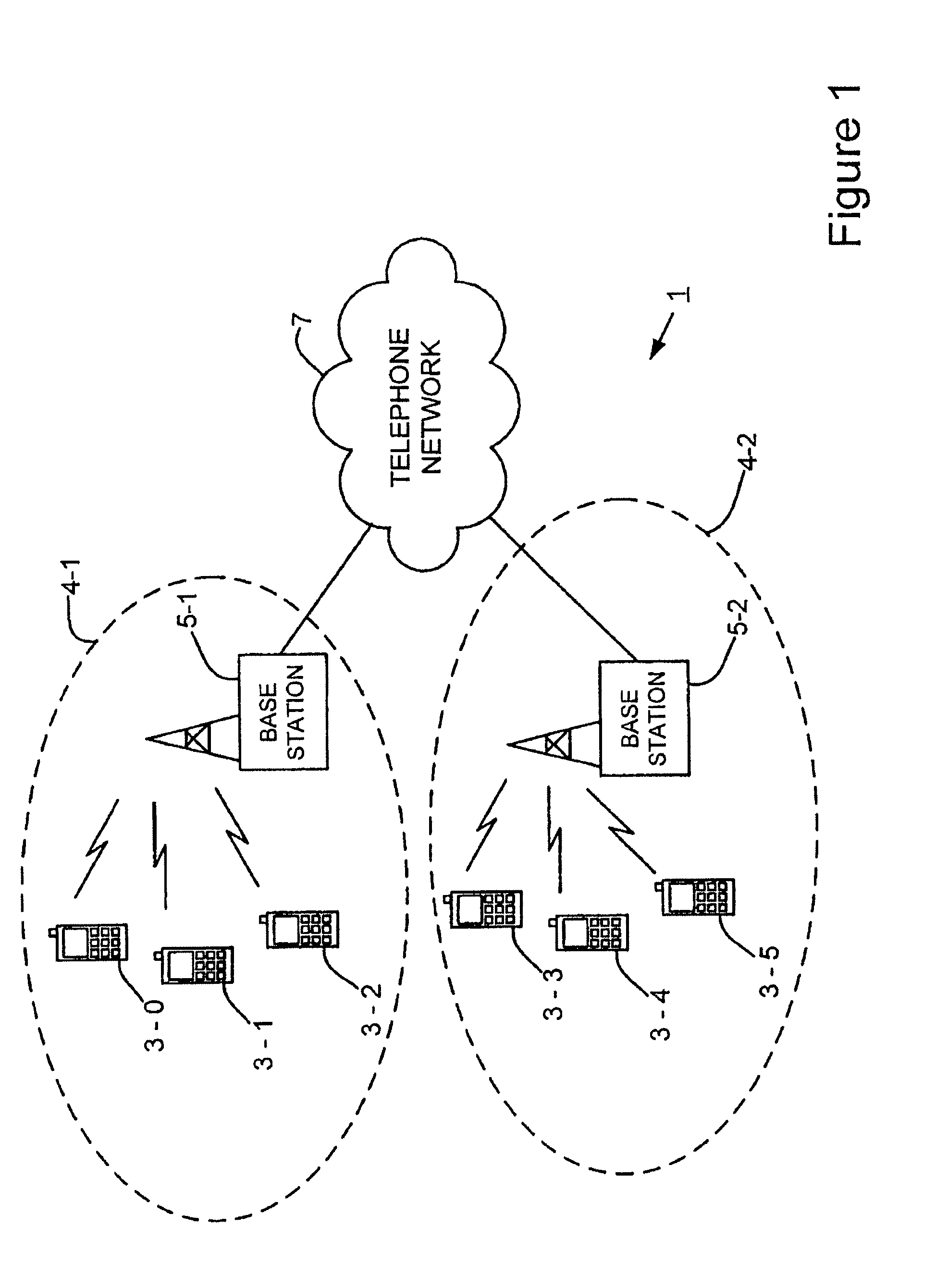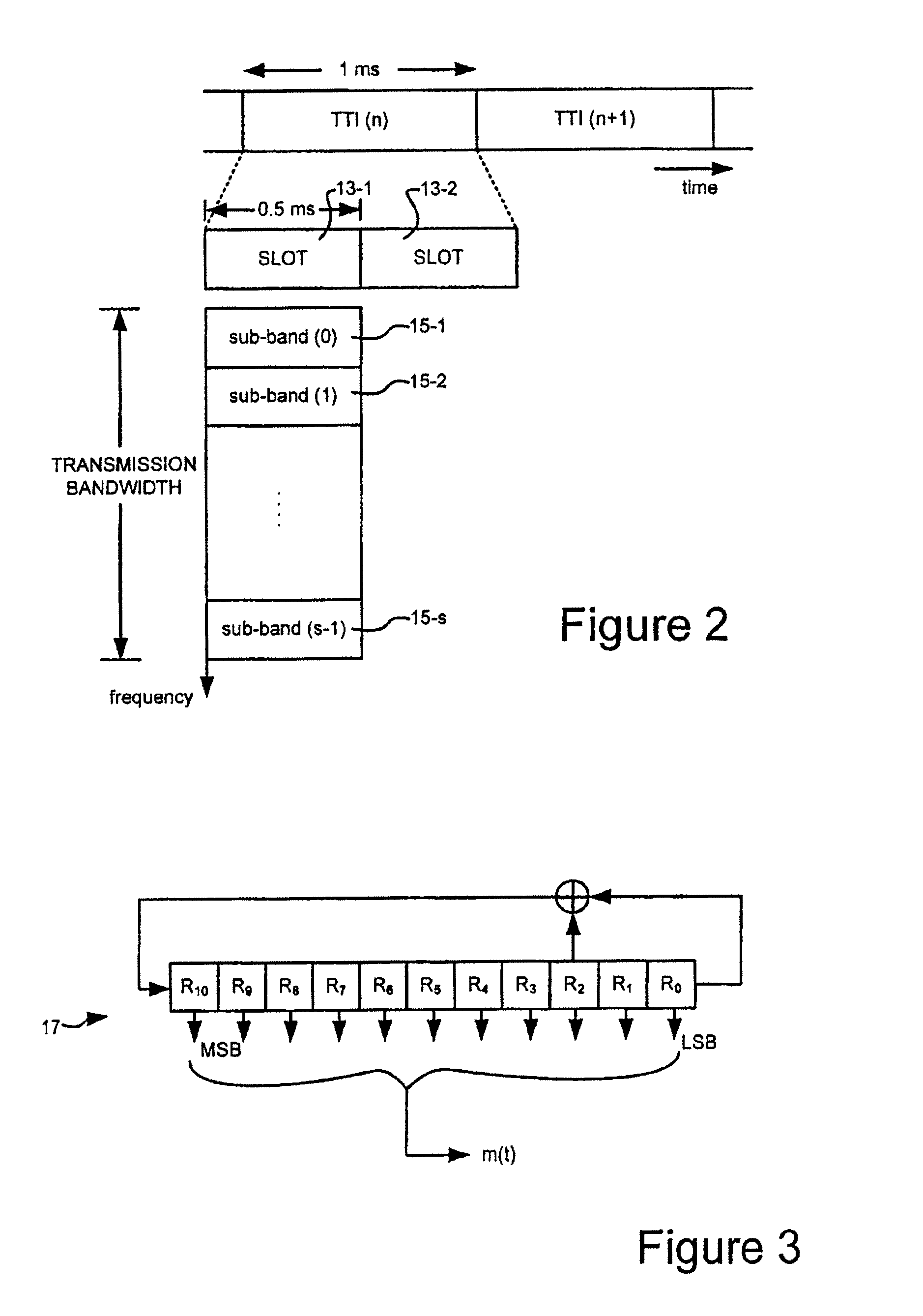Frequency hopping
a technology of frequency hopping and communication system, applied in the direction of multiplex communication, wireless commuication services, transmission path division, etc., to achieve the effect of reducing inter-cell collisions and minimizing transmission collisions
- Summary
- Abstract
- Description
- Claims
- Application Information
AI Technical Summary
Benefits of technology
Problems solved by technology
Method used
Image
Examples
Embodiment Construction
[0027]Overview
[0028]FIG. 1 schematically illustrates a mobile (cellular) telecommunication system 1 in which users of mobile telephones 3-0, 3-1, and 3-2 in a first cell 4-1 can communicate with other users (not shown) via a first base station 5-1 and a telephone network 7 and in which users of mobile telephones 3-3, 3-4, and 3-5 in a second cell 4-2 can communicate with other users (not shown) via a second base station 5-2 and the telephone network 7. In this exemplary embodiment, the base stations 5 use an orthogonal frequency division multiple access (OFDMA) transmission technique for the downlink (from base stations 5 to the mobile telephones 3) and a L-DMA+FH transmission technique for the uplink (from the mobile telephones 3 to the base stations 5).
[0029]The use of frequency hopping for the uplink has been chosen because it provides service quality improvements through interference averaging and frequency diversity. In this exemplary embodiment, the frequency hopping scheme is...
PUM
 Login to View More
Login to View More Abstract
Description
Claims
Application Information
 Login to View More
Login to View More - R&D
- Intellectual Property
- Life Sciences
- Materials
- Tech Scout
- Unparalleled Data Quality
- Higher Quality Content
- 60% Fewer Hallucinations
Browse by: Latest US Patents, China's latest patents, Technical Efficacy Thesaurus, Application Domain, Technology Topic, Popular Technical Reports.
© 2025 PatSnap. All rights reserved.Legal|Privacy policy|Modern Slavery Act Transparency Statement|Sitemap|About US| Contact US: help@patsnap.com



